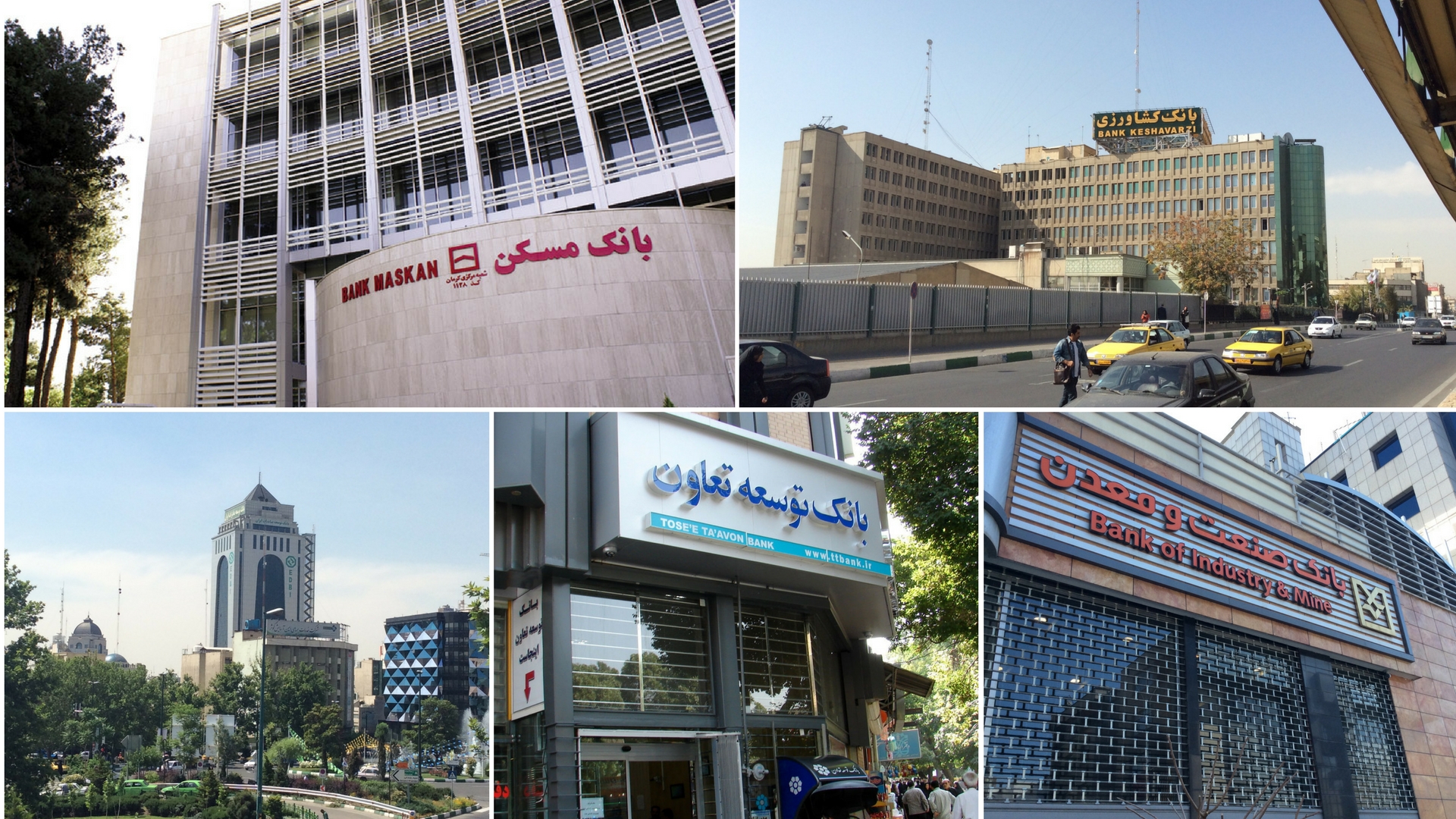The total volume of six state-run specialized banks’ debts to the Central Bank Iran by the end of the last Iranian year (March 20, 2017) reached 494.4 trillion rials ($13.2 billion), marking an annual decline of 13.7% year-on-year .
However, according to the latest data published by CBI on Monday related to Iran’s economic indicators for Q4 of last Iranian year, the figure for commercial banks’ debts to CBI reached 502.5 trillion rials ($13.4 billion), registering a surge of 90.7% YOY.
This is while during the period, the government’s payment arrears to CBI and the banking system reached 273.8 trillion rials ($7.3 billion) and 1.5 quadrillion rials ($42.2 billion), indicating a 12.2% and 33% increase compared with the same period of last year, respectively.
The amount of state-run companies’ debts to CBI and banks also went up by 9.4% and 38.1% to reach 302.3 trillion rials ($8 billion) and 37.3 trillion rials ($994.6 million), respectively.
This is while in January, President Hassan Rouhani notified a measure approved by his ministers, which decrees that Management and Planning Organization is permitted to allocate a maximum of 146.2 trillion rials ($3.78 billion) from CBI’s surplus assets to clear the government’s debt to agent banks.
By March 2017, the private sector’s debts to the banking system reached 9.2 quadrillion rials ($245.3 billion) to mark an increase of 24.7% YOY. More than 7.1 quadrillion rials ($189.7 billion), which equal 77.5% of private-sector debts, pertain to commercial banks while specialized banks account for the rest.
On the whole, both the private sector and government’s debts to the banking system by the end of the last Iranian year reached 11.3 quadrillion rials ($303.3 billion), shooting up by 25% compared with last year’s figure.
CBI’s data indicate that the private sector is responsible for more than 80% of the total debts to the banking system.
Deposits
The private sector’s deposits in the Iranian banking system as of March 20, 2017, reached 12.1 quadrillion rials ($323.7 billion) to register an annual increase of 23.9%.
The lion’s share of deposits were in the form of non-sight deposits that accounted for 89.8% of the total amount at 10.9 quadrillion rials ($290.7 billion), up by 23.8% YOY. Sight deposits absorbed only 1.2 quadrillion rials ($32 billion), constituting 10% of the total sum.
This is while the government has withdrawn a part of its deposits in the banking system, therefore the figure dropped by 4.5% and stood at 566.7 trillion rials ($15.1 billion) by March 2017. However, state-run companies’ deposits in the banking system increased by 13.3% to reach 47.7 trillion rials ($1.2 billion).
The total volume of banks’ legal deposits in CBI also witnessed an annual growth of 23% and reached 1.2 quadrillion rials ($32 billion), as a result of the establishment of new banks and credit institutions, and the significant recapitalization of state-owned banks. Banks’ sight deposits in CBI also went up by 4.2% and stood at 59.4 trillion rials ($1.5 billion).
As banks announced their deposit rate cuts, their capital would flow to other sectors of the economy but as the numbers show, people still favor banks and believe them to be a safe and profitable place to invest their money.
Foreign Assets
As cited in CBI’s data, Iranian banks’ foreign assets grew 11.4% by the end of the previous Iranian year compared with the corresponding period of last year to reach 588 trillion rials ($15.6 billion).
However, CBI’s foreign assets slightly dropped by 0.6% to reach 1.9 quadrillion rials ($50.6 billion). The overall net foreign assets of the banking system increased by 2% and stood at 2.5 quadrillion rials ($66.6 billion) by the end of the year to March 20.
Liquidity
The money supply exceeded 12.5 quadrillion rials ($333 billion) by the end of last Iranian year, up by a whopping 23.2% YOY, according to CBI’s data. The volume of monetary base and money in circulation grew by 17.3% and 19.3% respectively compared with the previous year.
NPL Ratio
According to the CBI report, the ratio of banks’ non-performing loans to the total volume of loans stood at 9.5% as of March 20, which is 2.1% lower than last year’s figure.
However, foreign exchange NPLs marked an annual increase of 0.8% and stood at 13.2%.
Since February 2017 when the Cabinet first approved that penalties for non-performing loans will be waived for loans amounting to 1 billion rials ($28,178), a total of 40 trillion rials ($1.06 billion) worth of bad loans have been returned by the people.



